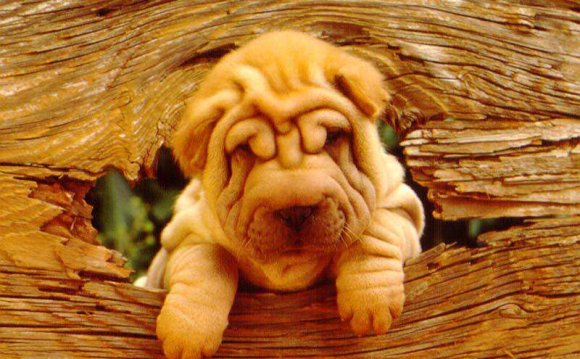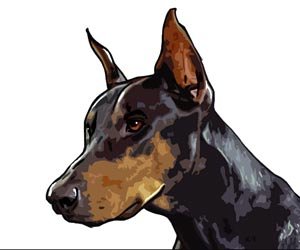|
This describes the most common canine health problems concisely but simply without using medical jargon. A section on Dog and Puppy Vaccinations is also included offering information on each of the diseases, symptoms and effects for which immunization vaccines are available. Not sure of the name of the dog or puppy illness? A Dog Illness Symptoms Sorter is also featured. The Online Encyclopaedia of Common Dog Health Problems should only be used as an informational guide and when and if any dog or puppies health problems occur it is essential to raise any questions you may have with a Dog Health care professional.
Information on Grooming and Care of the Chinese Shar Pei Dog Breed
The Chinese Shar Pei requires weekly care and grooming. All dog breeds require a certain amount of grooming and care is necessary to keep dogs and puppies looking at their best. Grooming consists of not only brushing out the coat and bathing but also giving attention to the eyes, teeth, ears, feet and nails. A regular routine also ensures that any potential health problems are identified as quickly as possible, especially important in puppies and older Chinese Shar Pei dogs.
 Life Expectancy information of the Chinese Shar Pei Dog Breed Life Expectancy information of the Chinese Shar Pei Dog Breed
The life expectancy for this particular breed is 8 – 12 years.
Age comparison between the Chinese Shar Pei Dog Breed and a Human
Age comparisons between dogs and humans are always a matter of debate - we hope that the following information clarifies the situation. After the first year of life, a dog is equivalent to sixteen human years. After two years, they are equivalent to a 24 year old, at three years a 30 year old, and each year after, add 5 human years to determine a dog's age.
The Pictures reflect the Size of Adults - not Children and Puppies!
The pictures above allow for a useful comparison of sizes providing an accurate portrait of the size of an average Chinese Shar Pei - essential information but unique to this site. It should also be noted that the pictures feature adults. The size of puppies are naturally considerably smaller and the full grown size of the animal can easily be forgotten when confronted with cute puppies! The slogan " A dog isn't just for Christmas - it's for life!" was necessitated by well meaning people buying puppies at the Christmas, unaware of the puppies growth rate. The pictures provided make it extremely clear exactly how small puppies will develop and whether it will suit the life and living conditions of the family.
Chinese Shar Pei Dog Breed - Puppies Info and Names
The Puppies section, accessed via the Site Index, provides detailed information about Choosing the right puppy, Puppy Training, Puppy Care and Puppy Behavior, Growth & Development. We recommend that the following considerations should always be taken into account when choosing puppies:
- Budget - Purchasing, training, equipment, medication and feeding costs of the breed
- Convenience and Grooming time e.g. long or short hair
- Personal situation - time available and medical conditions such as allergies, asthma or back pain
- Exercising requirements for the Chinese Shar Pei breed
- Living Conditions for the dog breed - suitability for puppies
- Family - child suitability
- Puppy and Dog Names - The Importance of choosing the right names
Non-Sporting Dog Breed Information
Dogs in the Non-Sporting Group are a diverse group which do not fit the specified criteria of the other breed groups. In addition, the Non-Sporting Group may no longer perform the tasks they were originally bred for.
These dogs vary in every conceivable way from size, temperament, features and coats! Some are well known and some are less common. There is no unifying theme with these dogs! Times, fashions and societies have changed and so have the need for breeds to assist in what was once considered entertainment, or sport, such as bull or bear baiting.
Non-Sporting Breed Past Duties
The characteristics and features of Non-Sporting Dogs cannot be generalised. Each breed would have originally have been introduced and strengthened by breeding with animals who already demonstrated the desired traits. Breeding for appearance was only introduced in the 19th Century. Before this time dogs and puppies were bred to increase useful abilities and traits helpful for the duties they were intended for. Because of the diverse nature of these breeds it is not possible to detail every task they were involved with but here are a few:
|



 Life Expectancy information of the Chinese Shar Pei Dog Breed
Life Expectancy information of the Chinese Shar Pei Dog Breed








